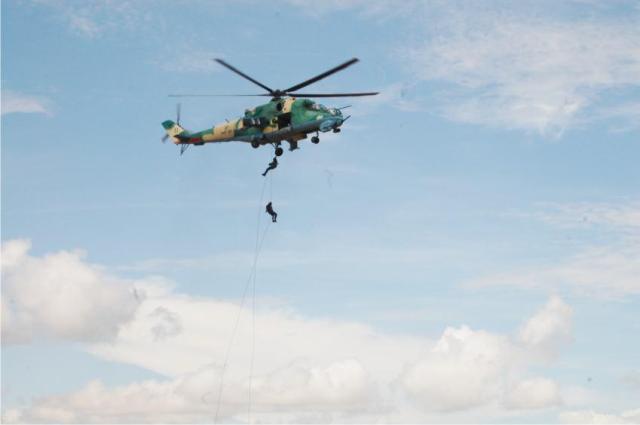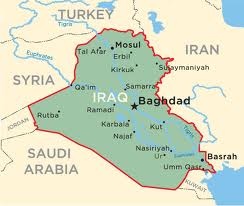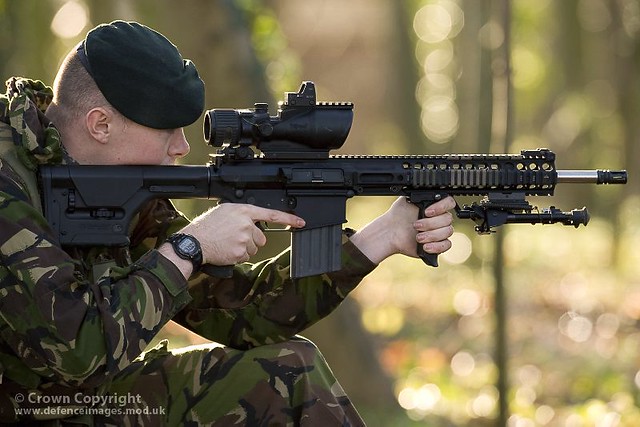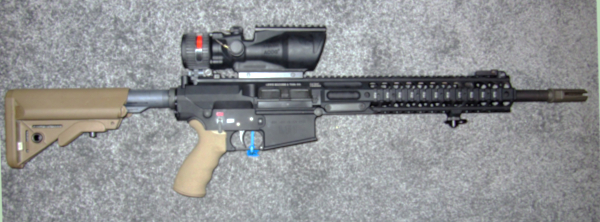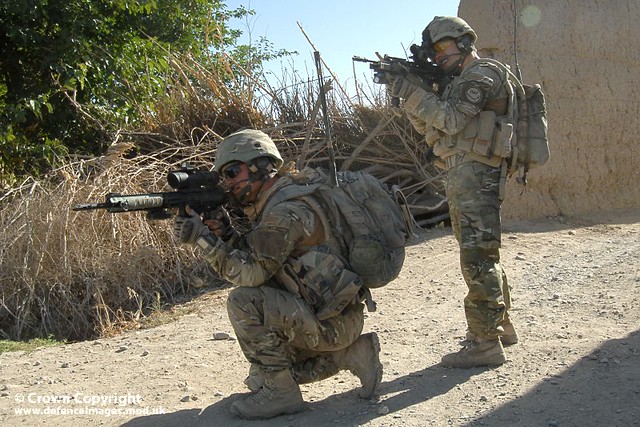U.S. special operations forces are the nation’s most celebrated terrorist killers. But they also have underutilized skills that could help prevent wars, officials said.
The war against al-Qaida and other Islamic extremist groups has become more complex since the 9/11 attacks, said Army Lt. Gen. John Mulholland, deputy commander of U.S. Special Operations Command. Navy SEAL raids and precision drone strikes alone will not be enough to defeat these enemies, he said.
“We have known for a long time that we are not going to kill our way to victory,” Mulholland said Nov. 28 at a Defense Strategies Institute conference, in Alexandria, Va.
What is needed, he said, are “preemptive efforts before the fight starts.”
Counterterrorism is “much broader than direct action,” he said. SOCOM Commander Adm. William McRaven is a strong believer in indirect methods of fighting terrorist groups, Mulholland said.
McRaven would like to see special operations forces take on a larger role in the training of foreign allies — an activity known in military-speak as “building partner capacity.” Strengthening the internal security of friendly countries where al-Qaida and its affiliates are recruiting members would help counter these groups’ influence, and possibly prevent a wider conflict, SOCOM leaders believe.
Army Special Forces, or Green Berets, have been deployed in these capacity-building roles for decades, but a more sustained effort is needed, said Mulholland. SOCOM’s skills and resources should help the United States stay “to the left of problems,” he said, instead of having to intervene later and put U.S. military forces in harm’s way.
Since McRaven took charge of SOCOM in 2011, he has sought to expand the command’s authorities in several areas, one of which is building partners’ capacity. The current process is “suboptimal,” Mulholland said, because it is rooted in the Cold War, when the world was bipolar. “We don’t believe it gives us what we need today to build capacity in areas of the world that matter,” he said. SOCOM would like more flexibility to establish long-term relationships with partners that are facing threats from al-Qaida and its affiliates, he said. “We lack the ability to deliver a program to a country that needs help. We’re looking for authorities to get at that challenge more meaningfully.”
Africa, particularly, is an area “where we should invest,” he said. Weak internal security in several African nations is raising concerns about these countries becoming safe havens for terrorist groups, Mulholland noted. A case in point is Mali, where al-Qaida's North African wing has taken over significant portions of the country.
SOCOM sees Mali as a cautionary tale. “We know what needs to be done with partners,” said Mulholland. “But we don’t have the tools.”
SOCOM’s request for broader powers to fight terrorism has stirred controversy inside the Pentagon and on Capitol Hill. It was the topic of a House Armed Services Committee emerging threats subcommittee hearing in July. Linda Robinson, a senior fellow at the Council on Foreign Relations and an expert on special operations forces, told the panel that SOCOM’s proposal had merit.
SOF units that currently are training partner militaries are “not properly resourced, organized or supported to fully maximize their potential,” she said. “Successful employment of the indirect approach requires both proactive involvement and patience for the effort to produce results.”
SOCOM officials recognize that Congress tends to be skeptical of open-ended efforts, and that their plan might be a tough sell.
“It requires placing SOF teams out in troubled regions for extended periods so they can gain familiarity, knowledge and relationships and then begin to execute solutions with the resident partners,” said Robinson. “This runs counter to a common tendency to wait until crises are full blown and action is imperative.”
She cited Colombia and The Philippines as examples of successful preemptive actions by SOF. In Colombia, more than a decade of “sustained, small footprint advisory assistance helped that country to greatly weaken the narco-terrorist insurgency known as the FARC,” Robinson said. “The Philippines is another case worthy of study to build a template for successful application of the indirect approach and achievement of enduring results.”
SOCOM’s desire for enhanced authority to deploy training teams in vulnerable countries is only one piece of a sweeping transformation that McRaven is seeking in how SOF units are employed worldwide.
The admiral raised hackles in Washington last year when he asked for direct control over the so-called theater special operations commands. TSOCs currently report to the geographic combatant commanders. But McRaven has argued that the TSOCs should be overseen directly by SOCOM to ensure they are sufficiently staffed and resourced to provide meaningful help to regional commanders.
Robinson said TSOCs have “chronically lacked adequate staff and resources” and are considered “career-ending assignments.” TSOCs should, instead, be the place where SOF skills and regional expertise should come together, said Robinson.
McRaven has proposed that TSOCs become sub-unified commands of U.S. SOCOM. He has argued that this is not a power grab by the command, but rather an attempt to better support geographic commanders. “It does create for the first time a coherent connection between TSOC and mother SOCOM,” Mulholland said. He insisted that McRaven’s plan will allow SOF to respond to crises in a timely manner. When the U.S. Consulate in Benghazi was attacked Sept. 11, a SOF company assigned to U.S. Africa Command — known as “cinc in-extremis” force — was located at the U.S. Naval Air Station in Sigonella, Italy.
“Those forces worked as advertised. They were in position,” Mulholland said. But they were physically too far from the action to be able to intervene quickly enough. Mulholland declined to discuss the particulars of the events in Benghazi but he did suggest that if SOCOM were given more discretion to move forces around based on anticipated threats, SOF quick-reaction units could be far more effective. “To be relevant in this security environment, you have to be ahead of the crisis,” he said.
If a geographic commander needs SOF assistance today, he has to submit a request for forces to the Joint Staff at the Pentagon. “That takes time,” said Mulholland. McRaven wants to be able to short-circuit that process and provide immediate help. If necessary, he would move forces horizontally from one theater to another.
Mulholland noted that only 6 percent of SOF are assigned to theaters. The majority of the 66,000-strong command is based in the United States and reports directly to SOCOM headquarters, in Tampa, Fla.
“Today McRaven doesn’t have a formal relationship with TSOCs. It’s bizarre,” Mulholland said.
McRaven’s proposed reorganization requires a revision to the Unified Command Plan. The president must approve any changes to the UCP, which was last updated in April 2011. "The current review process is still underway, but I don't have an estimate for its completion," Pentagon spokesman Lt. Col. James O. Gregory told National Defense.
“We think it’s going well,” said Mulholland. But he cautioned against counting chickens before they hatch. “We think it will be successful. COCOMs [combatant commanders] support it.”
SOCOM is seeking expanded responsibilities at a time when the command is busier and bigger than ever. With 66,000 members — including both military personnel and civilians — SOCOM has doubled since 2001. Its budget of $10.5 billion is more than twice its 2001 inflation-adjusted budget of $4.2 billion.
“SOF operators have never been held in higher regard by our nation, by the public, by our international partners and, more importantly, by our adversaries,” said Garry Reid, principal deputy assistant secretary of defense for special operations and low-intensity conflict.
SOCOM will grow to 71,000 members by 2018, Reid told the Defense Strategies Institute conference.
Reid endorsed McRaven’s plan to bolster theater-based forces. “We need to regain some regional specialization,” he said. Before 9/11, SOF were spread around the world. But during the past decade, 85 percent of SOF has been deployed in Iraq and Afghanistan, in support of U.S. Central Command. “That comes at a price,” said Reid. “We want to get back to understanding other areas and languages.”
Even as current wars wind down, the demand for SOF will no subside, said Reid. In addition to traditional SOF assignments, “there’s an increased appetite for SOF ‘liaisons’” at embassies and across U.S. and foreign government agencies, he said. “That’s a lot of 04s and 05s [field grade officers] that come out of the operational force,” said Reid. “We have a bulge of requirements.”






